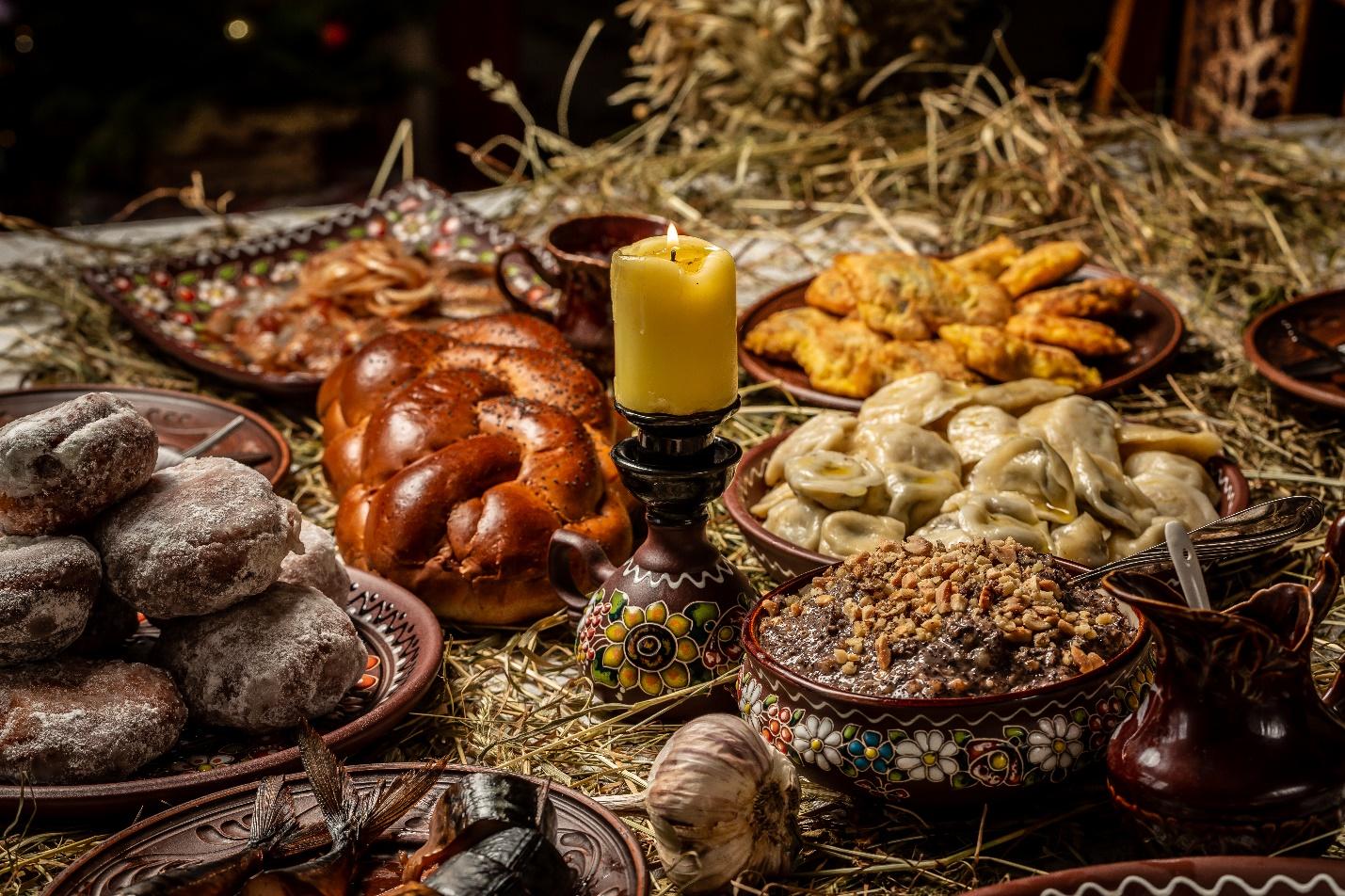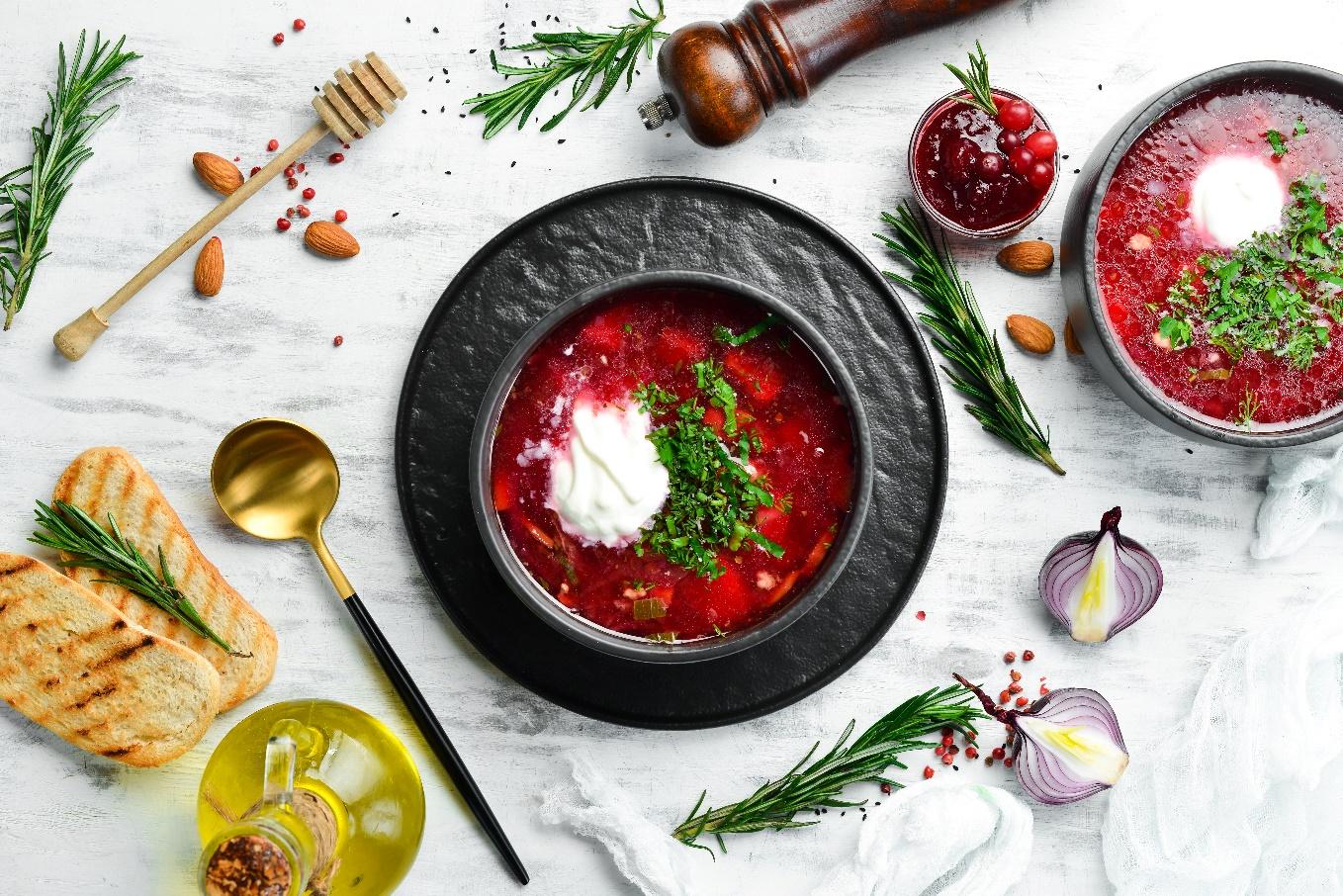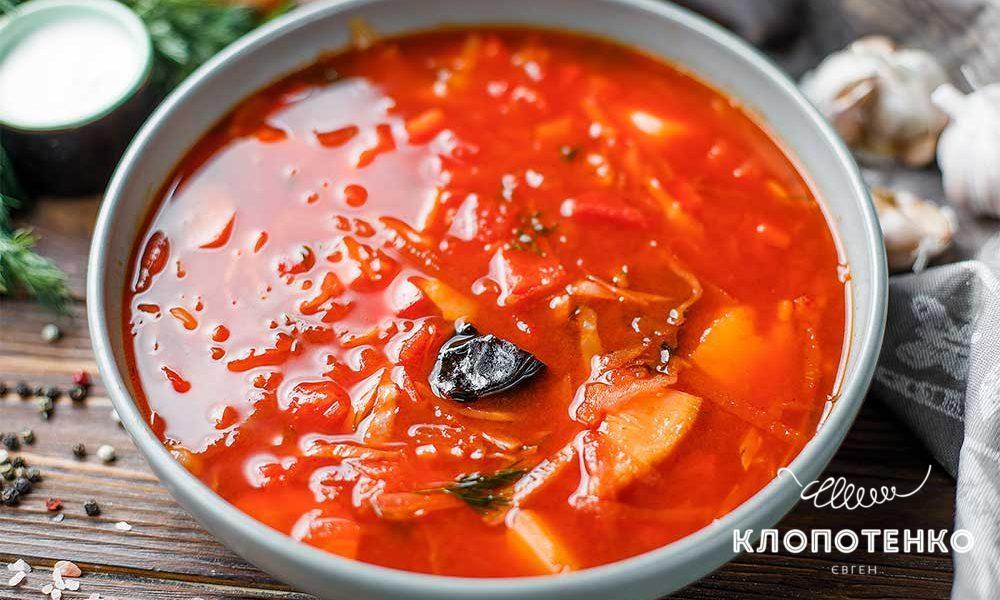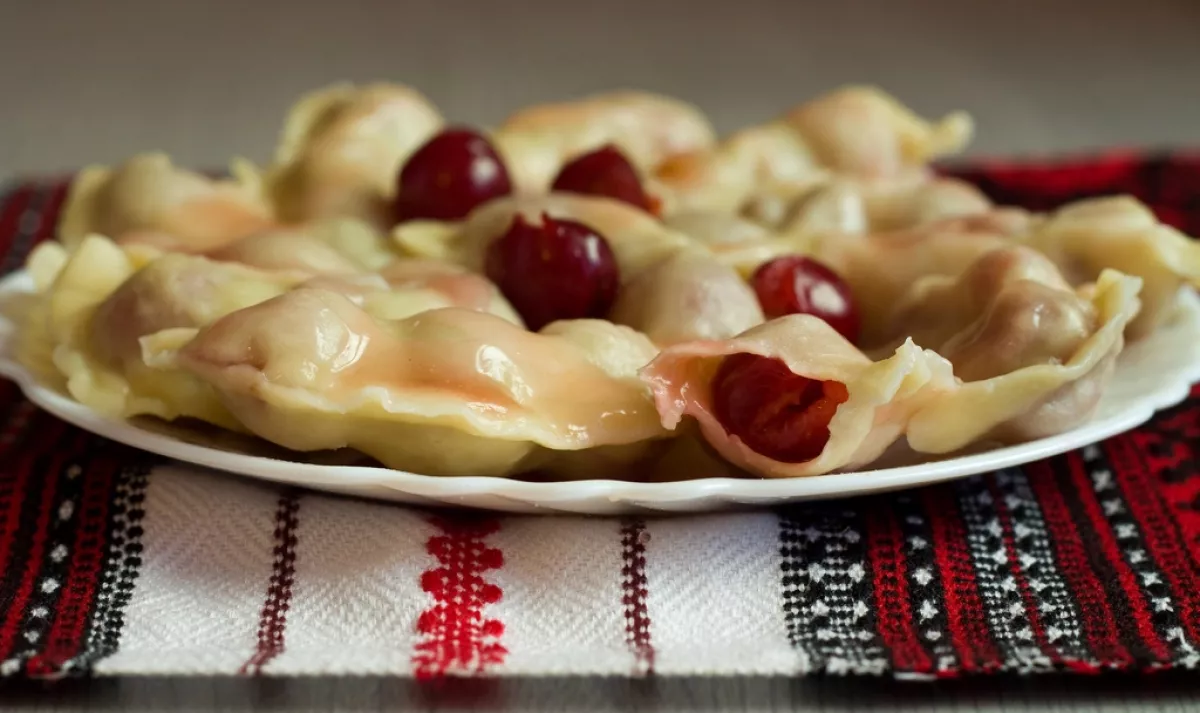
Ukrainian cuisine presents a genuine sensory feast, featuring a variety of robust and flavorful dishes that intricately mirror the nation's extensive history and cultural legacy. From savory soups and stews to delectable pastries and desserts, there's a diverse array to cater to every palate.
The traditional Ukrainian diet centers around grains like buckwheat, rye, and barley, complemented by staples such as potatoes, beets, and other root vegetables. Additionally, dairy products like sour cream and cheese play a prevalent role in Ukrainian culinary traditions.

Photo: ua.depositphotos.com
Each region of Ukraine has its own specific dishes, such as the "hombovtsi" (a traditional sweet dish made from cottage cheese — ed.) of the Carpathian Mountains or the fish dishes of the Black Sea. Each season in Ukraine also has its own traditional dishes. Ukrainian cuisine is also known for its use of herbs and spices, such as garlic, dill, parsley, and paprika. Ukrainians also enjoy a variety of fermented dishes.
Among the most popular Ukrainian dishes, there are the following:
- varenyky (boiled dumplings filled with various fillings: potatoes, meat, cottage cheese, poppy seeds, cherries, etc.);
- borscht (beet soup);
- holubtsi (cabbage rolls stuffed with meat, rice, and herbs);
- kovbasa (smoked sausage);
- deruny (potato pancakes).

Syrnyky. Photo: ua.depositphotos.com
For dessert, traditional Ukrainian dishes include:
- pampushky (fried doughnuts with cottage cheese);
- syrnyky (sweet cheese pancakes);
- and various types of bakeries, etc.
A festive meal is usually accompanied by Ukrainian beer, vodka, medovukha (honey-based liqueur), and traditional drinks like kompot (stewed fruit) and uzvar (a drink made from a combination of dried fruits or berries, such as apples, raisins, prunes, or cranberries).
War over borscht: food as weapon against Russian aggression

Borscht. Photo: ua.depositphotos.com
Today, Ukraine asserts its national identity and independence from Russia, emphasizing its unique culture, particularly through traditional cuisine. A standout example is borscht, a centuries-old Ukrainian soup made with beets, cabbage, potatoes, tomatoes, carrots, and various spices. Passed down through generations, each family has its own unique borscht recipe.
In 2020, UNESCO officially recognized borscht as an Intangible Cultural Heritage of Ukraine, marking a significant milestone for the country. This acknowledgment highlights the soup's cultural importance, its role in fostering unity, and underscores respect for traditional Ukrainian cuisine. Yevhen Klopotenko, a Ukrainian chef, restaurateur, and food specialist, played a pivotal role in securing UNESCO recognition for borscht.
The acknowledgment of borscht as Ukrainian cultural heritage dealt a blow to Russian propaganda. In a March 2022 news conference, Russian Foreign Ministry spokesperson Maria Zakharova falsely claimed that Ukrainians were "stealing" borscht, asserting it belonged to Russian culture and accusing Ukraine of xenophobia.
Fortunately, Ukraine triumphed in the "war over borscht," as UNESCO's recognition in 2020 solidified its status as a crucial element of Ukrainian cultural heritage, dispelling unfounded claims and reinforcing the country's cultural identity.
From theory to practice: cook traditional Ukrainian dishes
Ukrainian borscht with pork ribs by Yevhen Klopotenko

Photo: klopotenko.com
Ingredients:
- 400-500 g pork ribs
- 2 beets
- 2 tomatoes
- 1/4 celery root
- 1/4 head of cabbage
- 3–4 potatoes
- 1–2 carrots
- 1 onion
- 1-2 smoked dried pears
- 2 bay leaves
- 3 cloves allspice
- 1 head of garlic
- 1 sweet bell pepper
- 200 ml tomato juice
- 30 g unsalted butter
- 2 tbsp tomato paste
- Salt
- Preheat the oven to 200°C. In an ovenproof dish, bake the pork ribs for about 30 minutes, or until a golden crust forms. Meanwhile, wash and roughly chop the celery root. There is no need to peel it. Cut up the carrots into chunks of about the same size as the celery pieces. Transfer the baked ribs into a large pot, and add about 3 liters of water. Add the celery and carrot chunks and half an unpeeled onion. Bring to a boil and cook over medium heat for about 30 minutes.
- Make the sautéed vegetable base — this is what makes any borscht so flavorful. Dice the sweet bell pepper. Finely dice the tomatoes and the other half of the onion.
- Heat the butter in a frying pan and cook the vegetables until they soften. Add 200ml tomato juice and about 2 tbsp tomato paste and cook for another 5–7 minutes.
- Using a box grater, shred one of the beetroots. Add it to the sautéed vegetables and keep cooking for another 3–4 minutes.
- Using a food processor with a juicing attachment, squeeze the juice out of the other beet (alternatively, you can grate it using the fine attachment on your box grater). Add the beet juice, purée, and vegetables into the pot with the ribs, celery, allspice, and bay leaves. Salt to taste.
- Wash and peel 3–4 potatoes.
- Dice them roughly and add them to the rib broth pot. Cut the head of garlic in half and add to the pot.
- Shred the cabbage and set it aside – we will add it to the borscht almost at the very end.
- If you like, you can add some canned white beans to the borscht at this point.
- Add the smoked dried pears to the pot. They will enhance the borscht with their wonderful smoky flavor.
- Add the shredded cabbage to the pot once all the ingredients have cooked through and are tender. Cook for 5 more minutes and take the borscht off the heat. Let it rest for at least half an hour before serving it with sour cream and finely chopped dill. Keep the borscht in the fridge, and remember that it will become even more delicious overnight.
Varenyky with cherries (filled dumplings)

Photo: Ukrainian-recipes.com
Ingredients:
- 600 g (21 oz) sour cherries
- 6 tbsp of sugar
- 200-250 g (7 – 8,5 oz) flour
- 175 ml water
- 2 eggs
- salt – to taste
- Take a large bowl. Mix flour with water, 1 egg, salt and 1 tbsp of sugar. Knead the dough until it becomes tough. Leave the dough for 20 minutes and then roll it. The layer of the dough should be thin – 2-3 mm. Cut the dough into little squares.
- Wash sour cherries and wait until the water drains. Add 5 tbsp of sugar and mix properly with sour cherries. Put some sour cherries (without pits) into each dough square. Beat the egg and oil the edges of the squares with it. Put two opposite edges of the dough square together and cover the dumplings' filling.
- Refrigerate varenyky for one hour. Then put them in the salted boiling water and cook until they come up from the water. Serve the Ukrainian dumplings with sour cherries and sour cream.
Not sure if it's essential to explore Ukrainian cuisine?
Well, you might not "need" to, but the reasons you probably should are compelling. Here's why:
To Experience Authentic Ukrainian Cuisine: Ukrainian dishes present a unique and flavorful experience unparalleled anywhere else globally. It serves as an excellent avenue to delve into the local culture, offering a distinct taste of a different country.
To Try Something New: Ukrainian cuisine beckons with a variety of dishes ready to tantalize your taste buds, promising a culinary adventure that breaks away from the ordinary.
To Support Local Businesses: Opting for Ukrainian dishes is a direct endorsement of the local economy. Many restaurants and cafés offering traditional Ukrainian fare are often family-owned or small businesses, and your patronage plays a crucial role in sustaining these establishments.
To Appreciate a Rich History: Ukrainian cuisine, having evolved over centuries, mirrors the country's intricate history and culture. Exploring these dishes becomes a pathway to a deeper understanding and appreciation of Ukrainian heritage.
So, why not indulge in some delectable Ukrainian dishes? It's an invitation to unravel the enchantment woven into the magic of Ukrainian cuisine.
Find out more about Ukraine's festive traditional food in our pieces on Ukrainian Easter and Christmas traditions.
Newsletter
Digest of the most interesting news: just about the main thing







